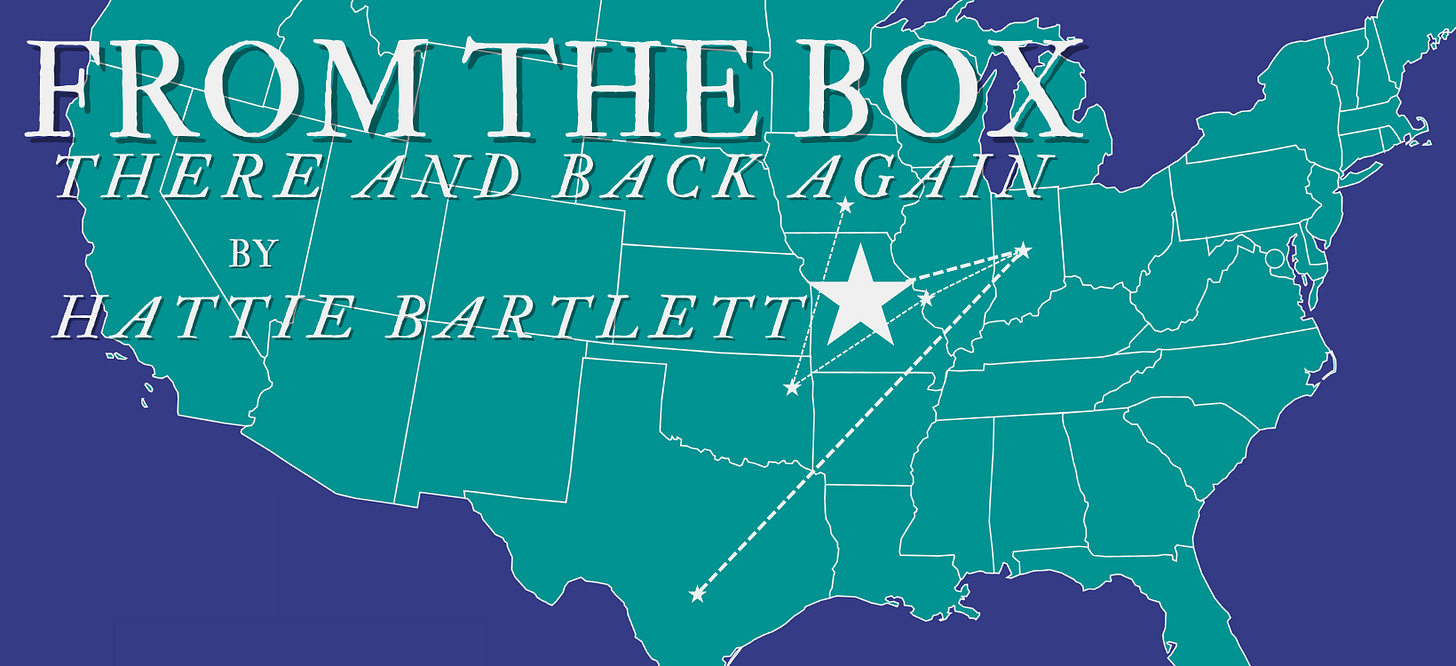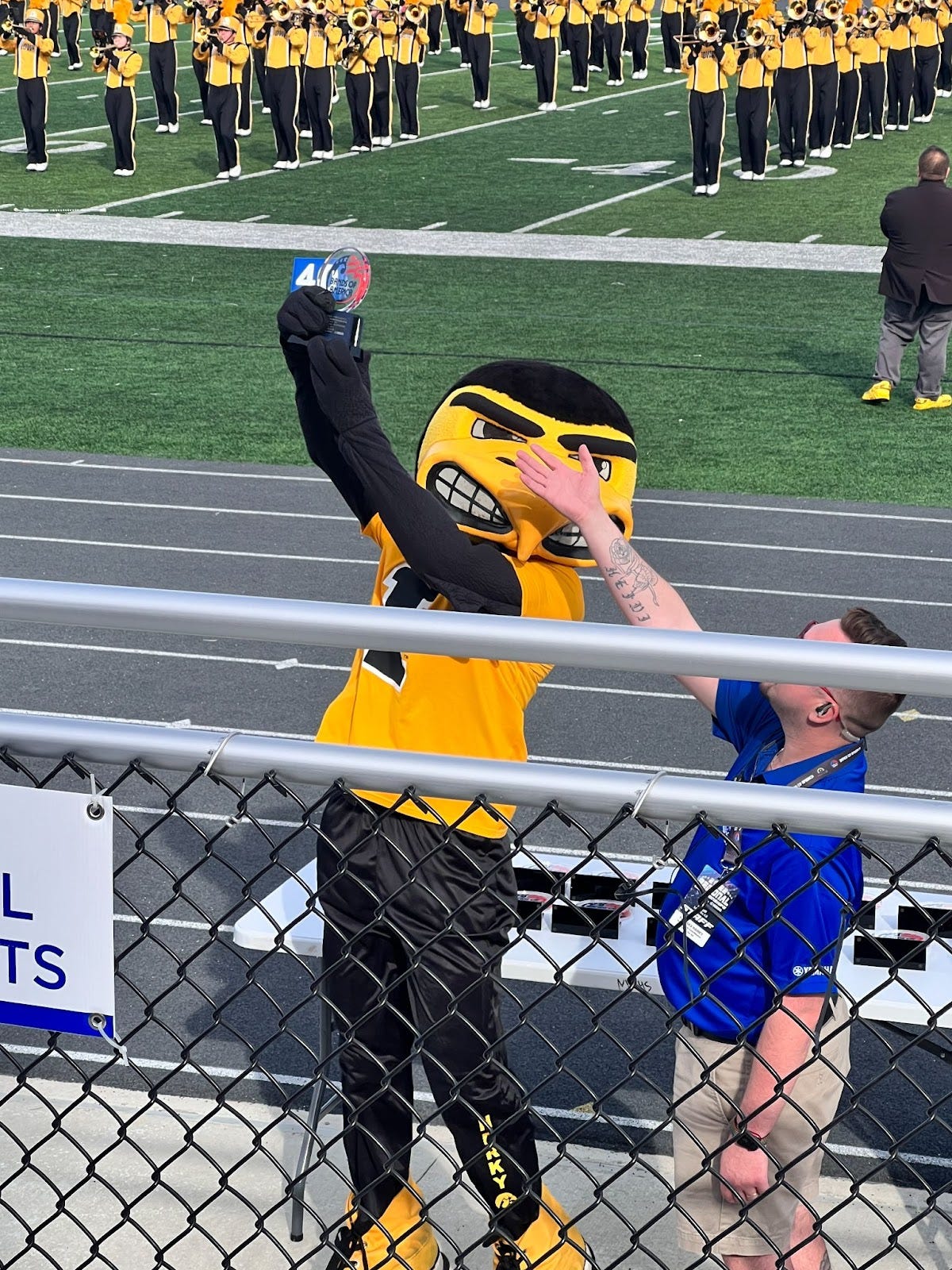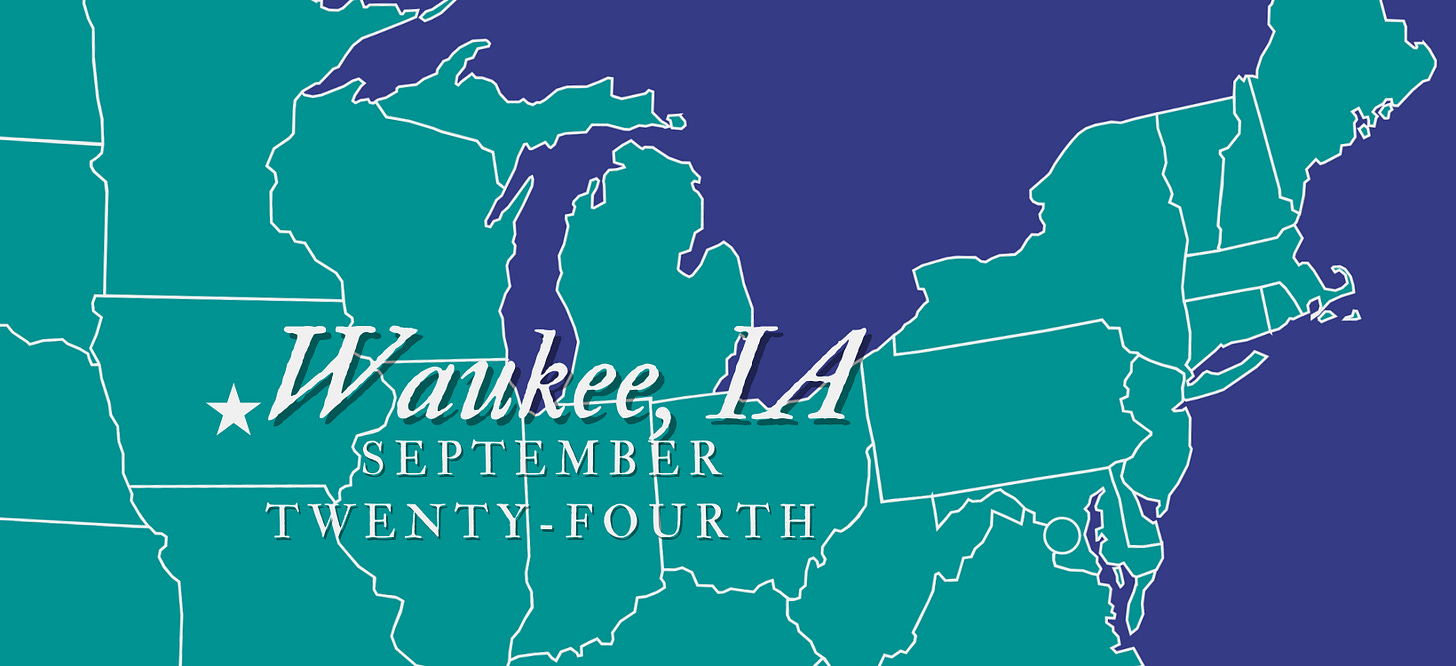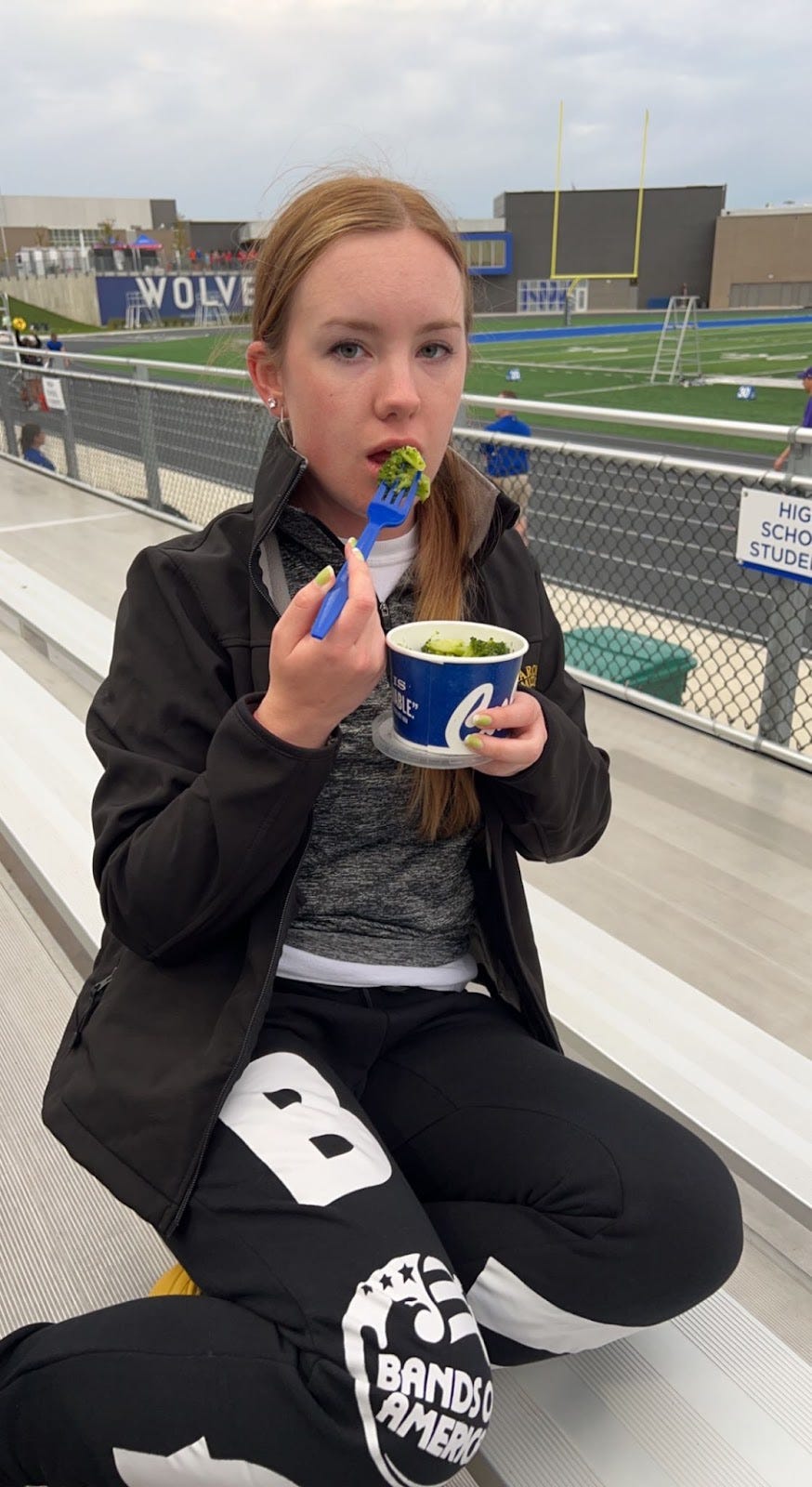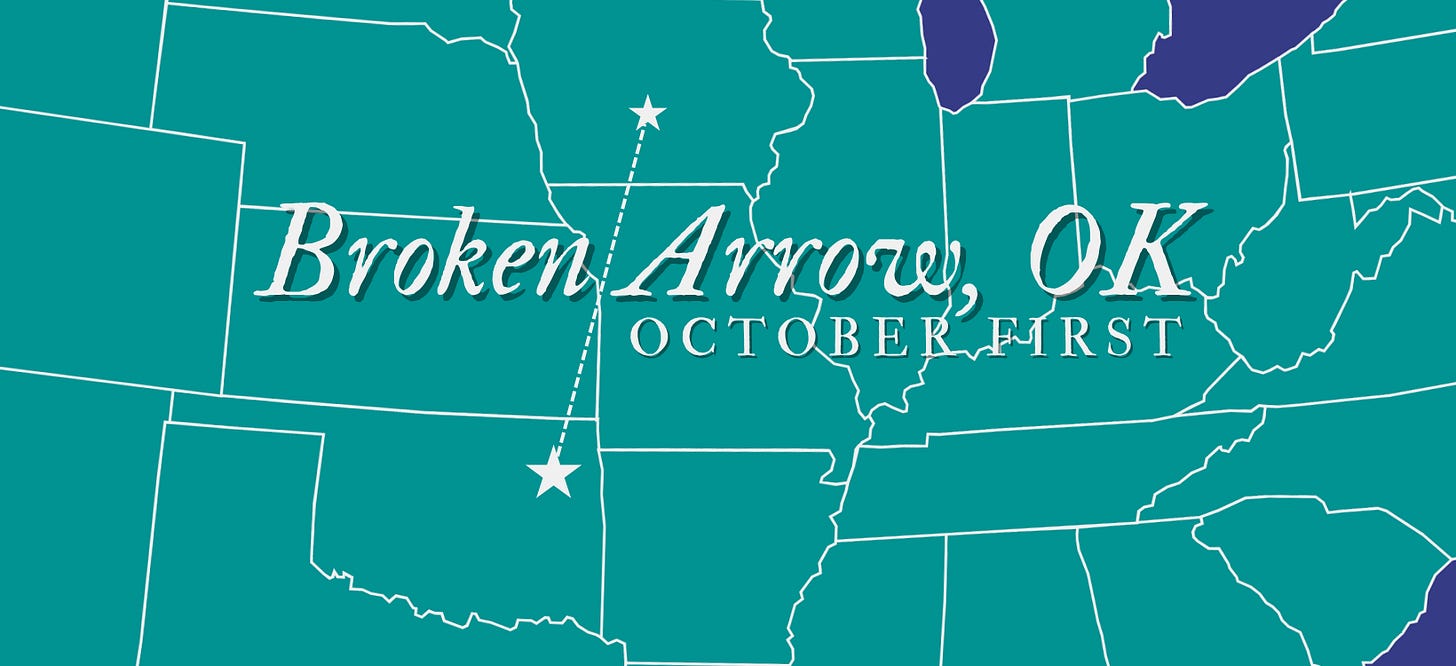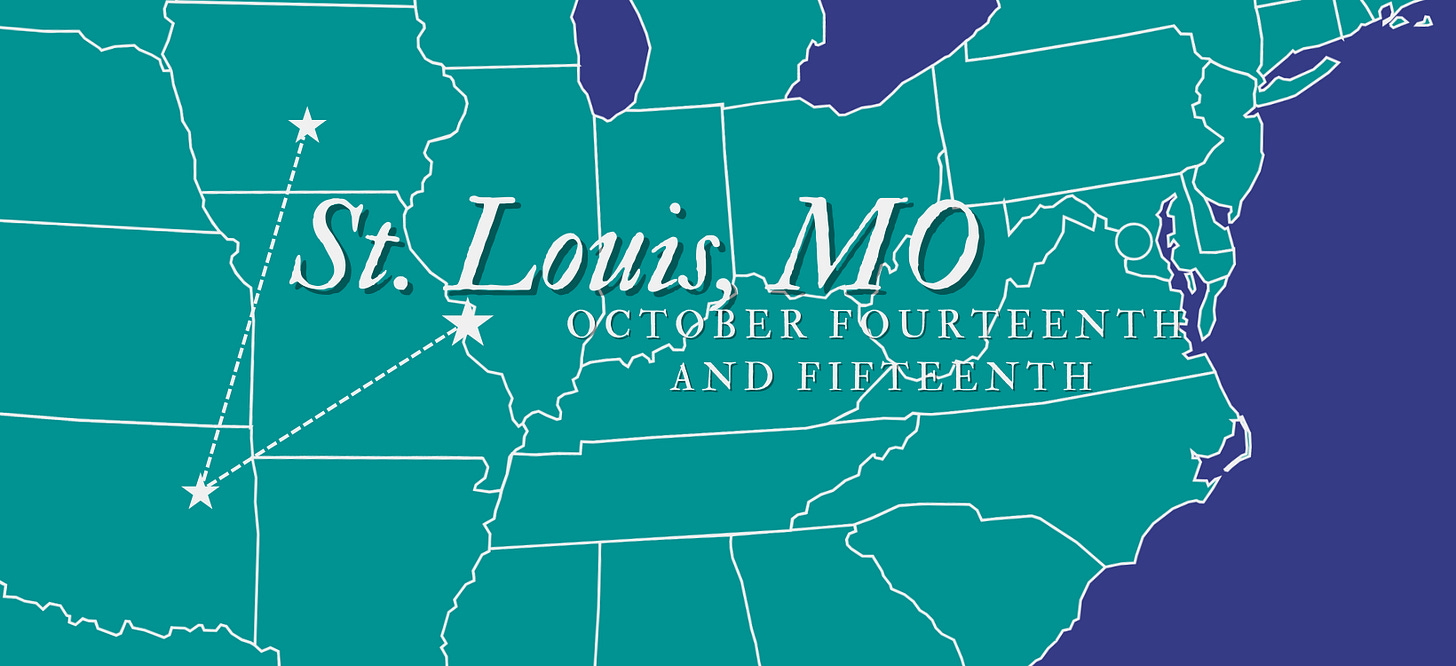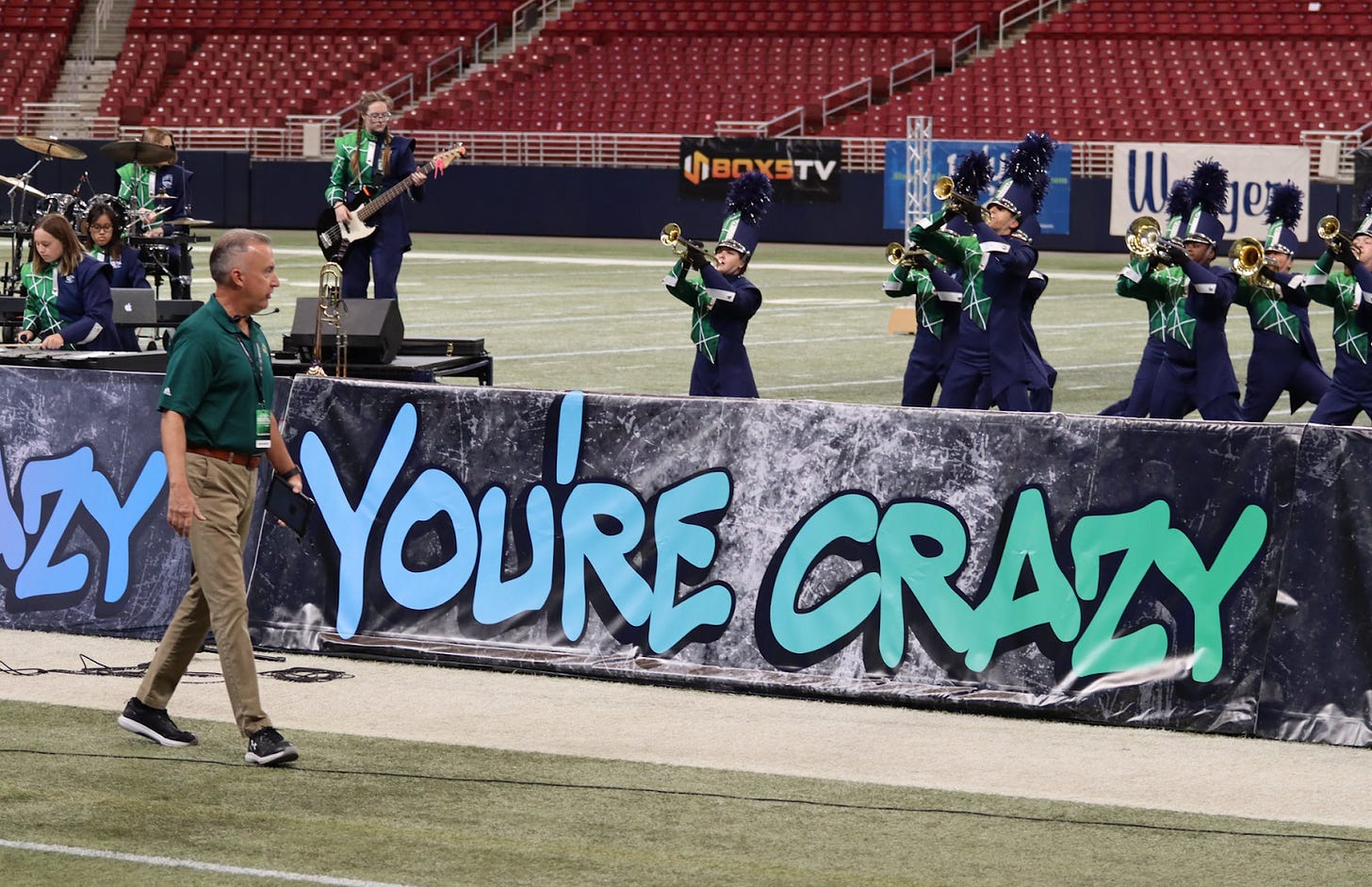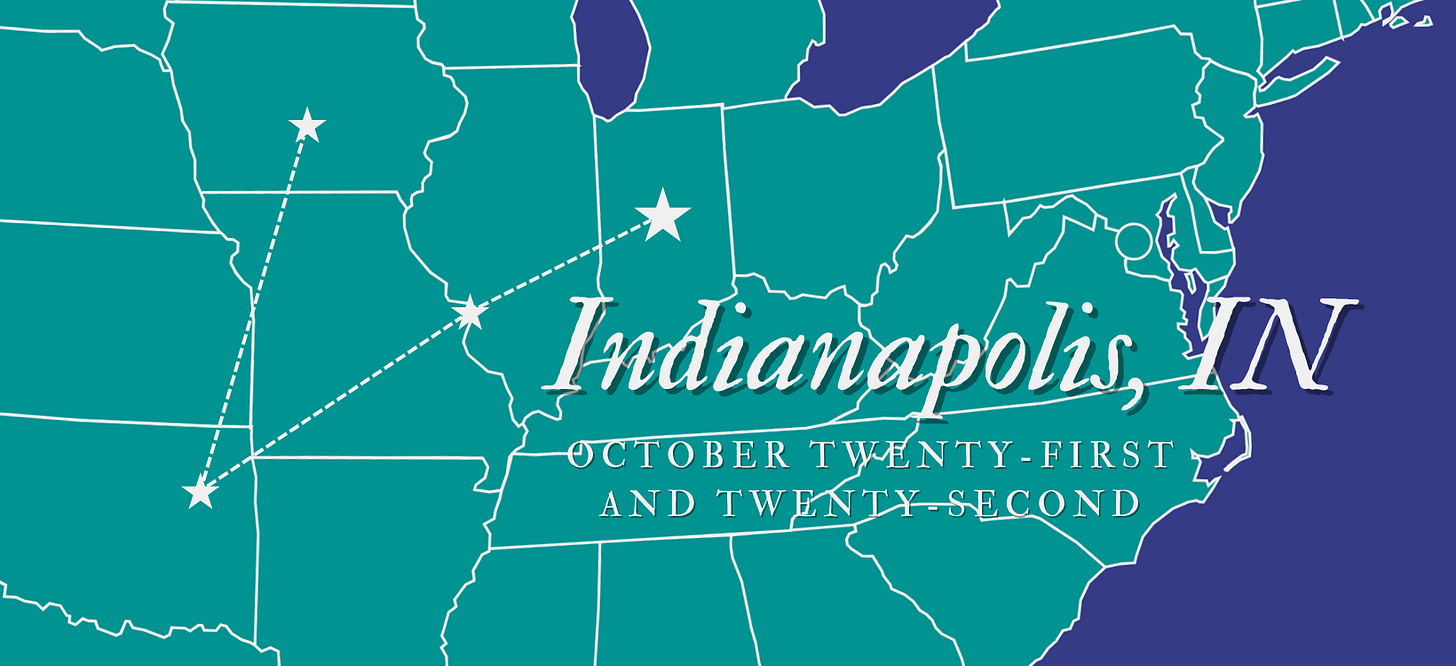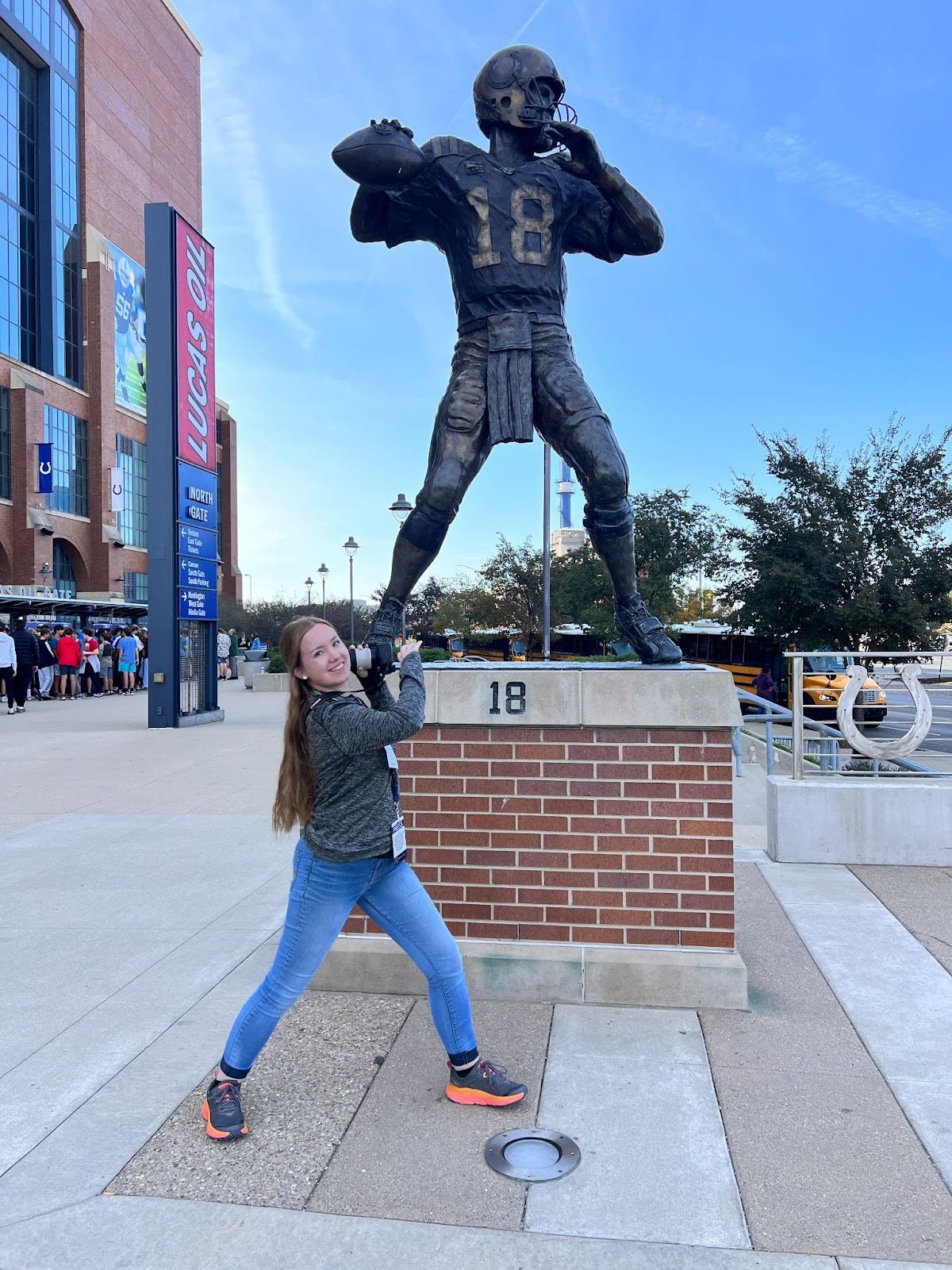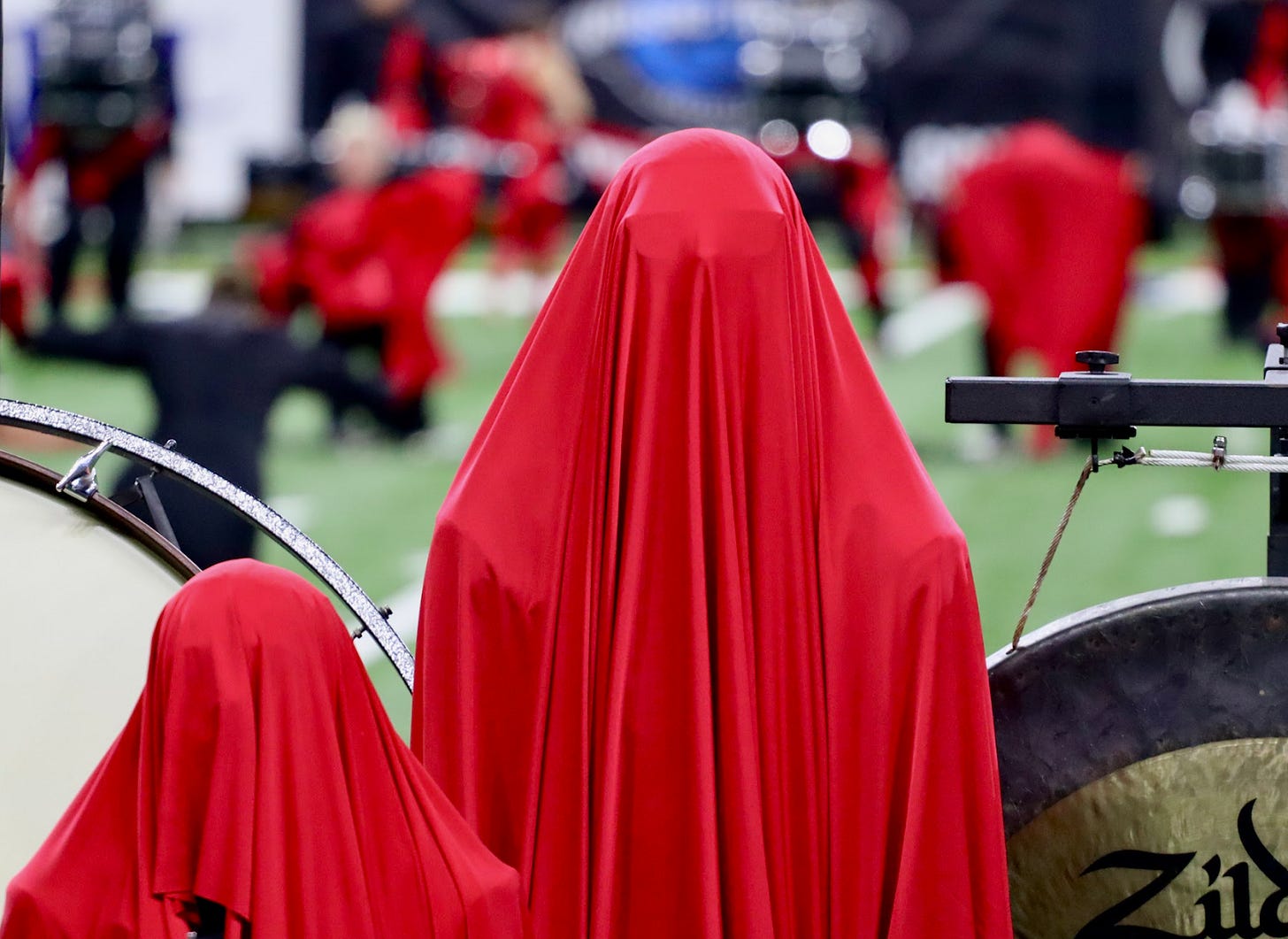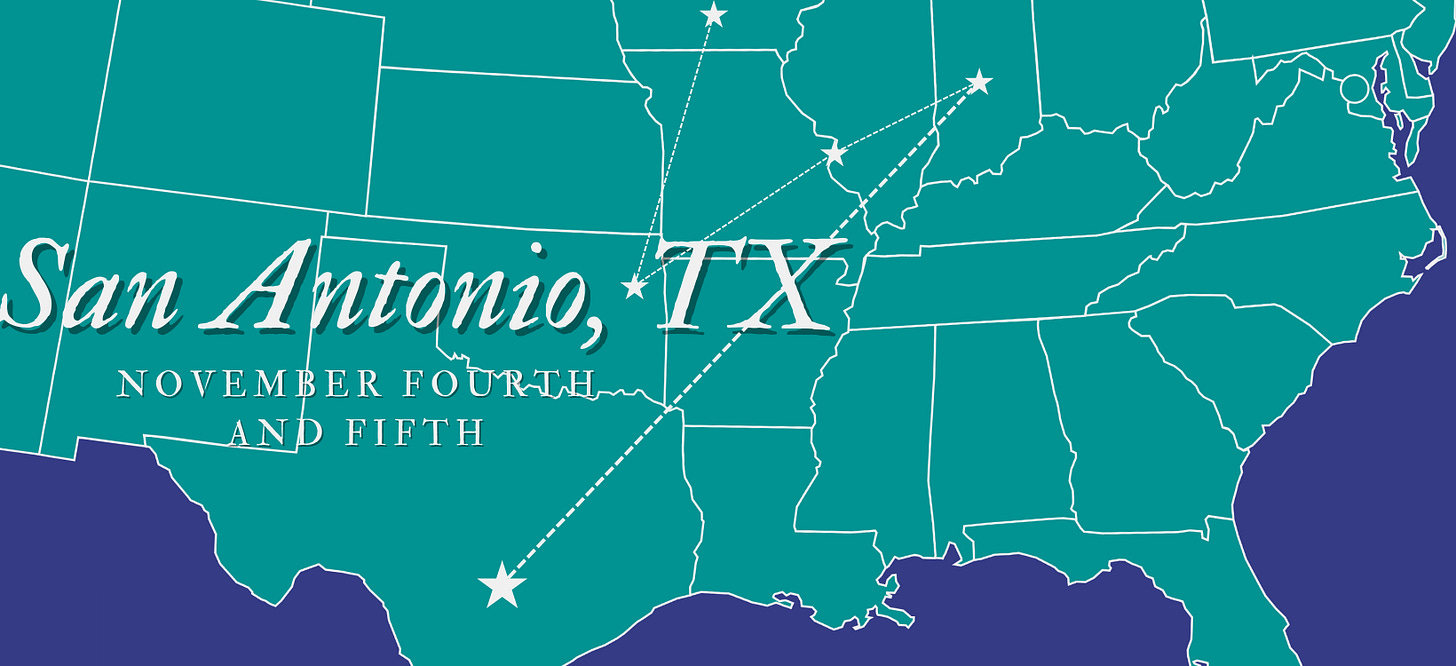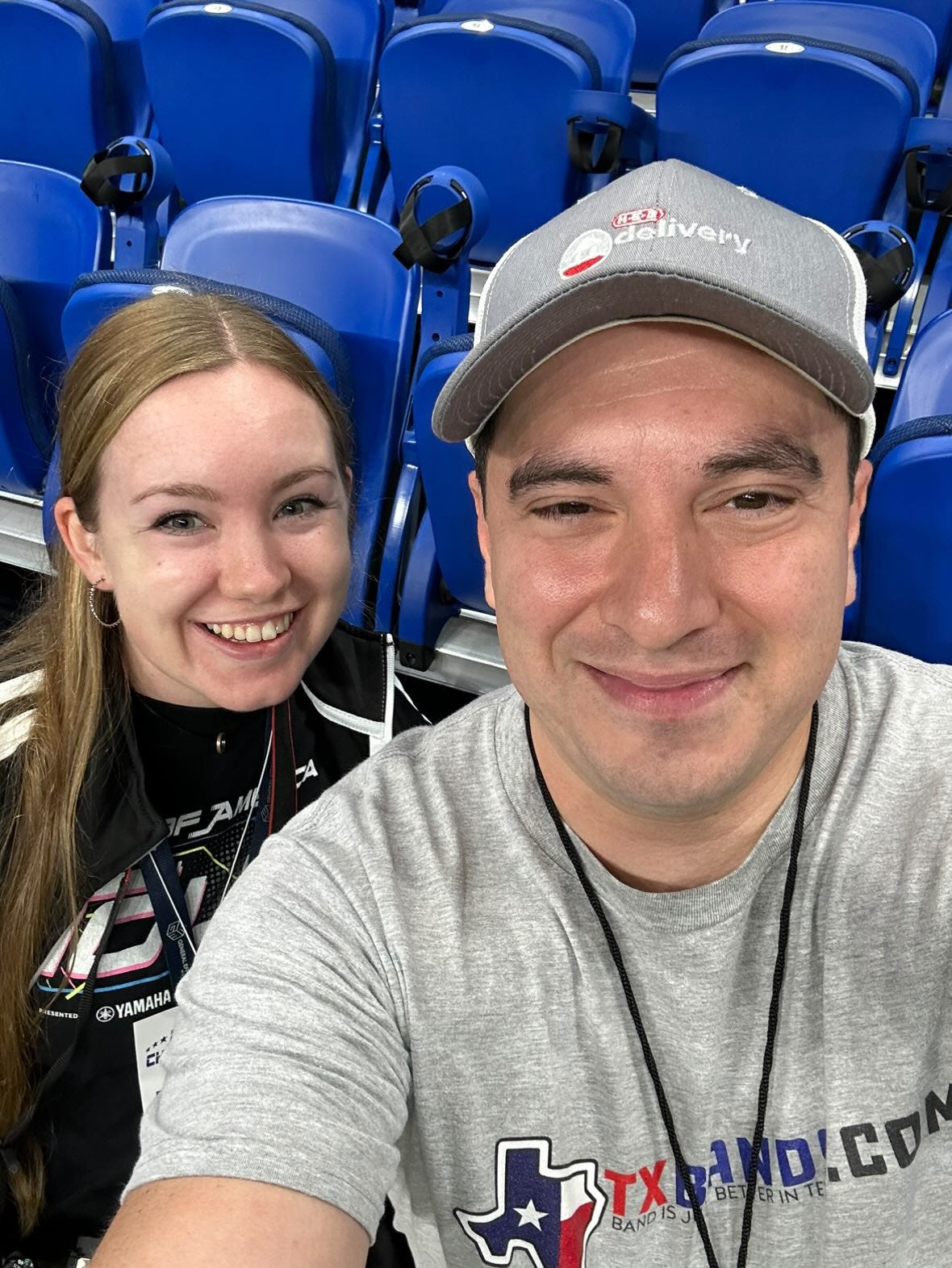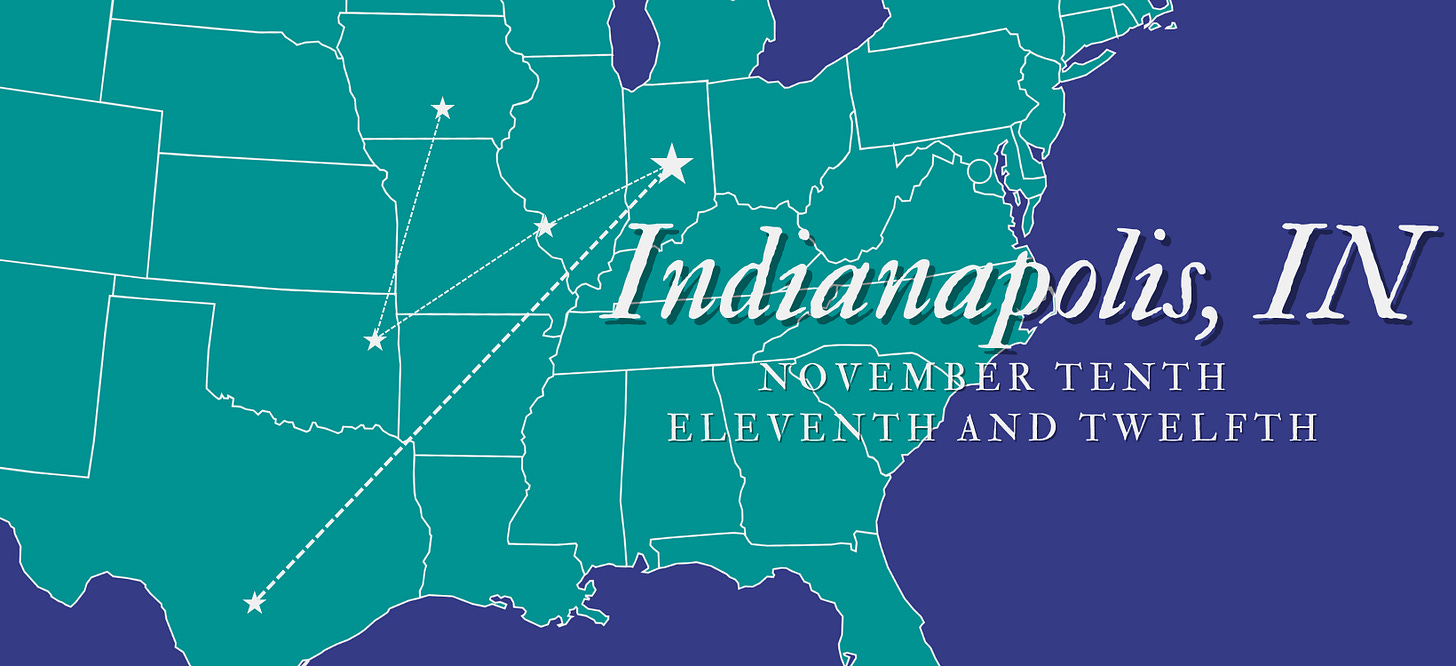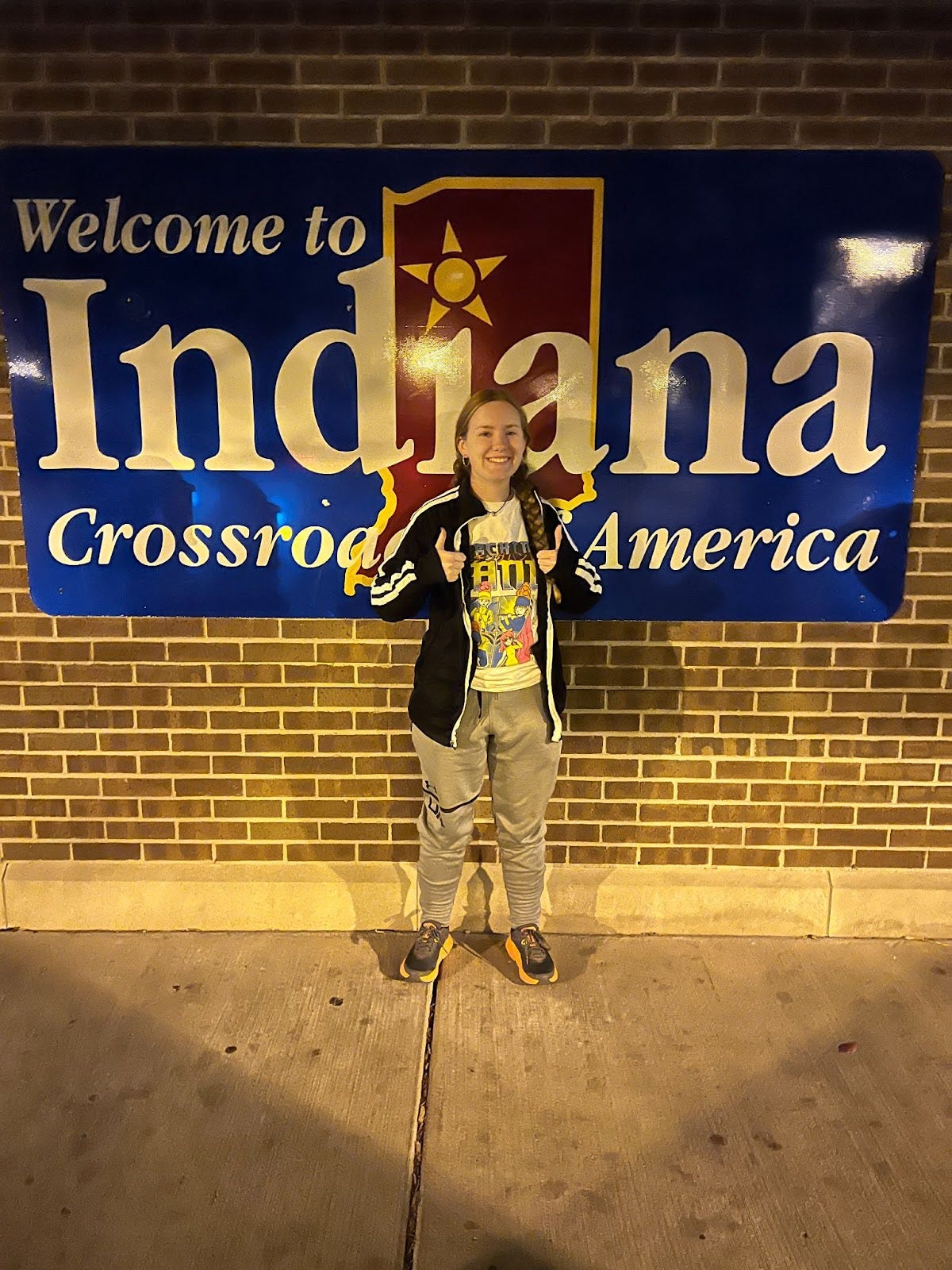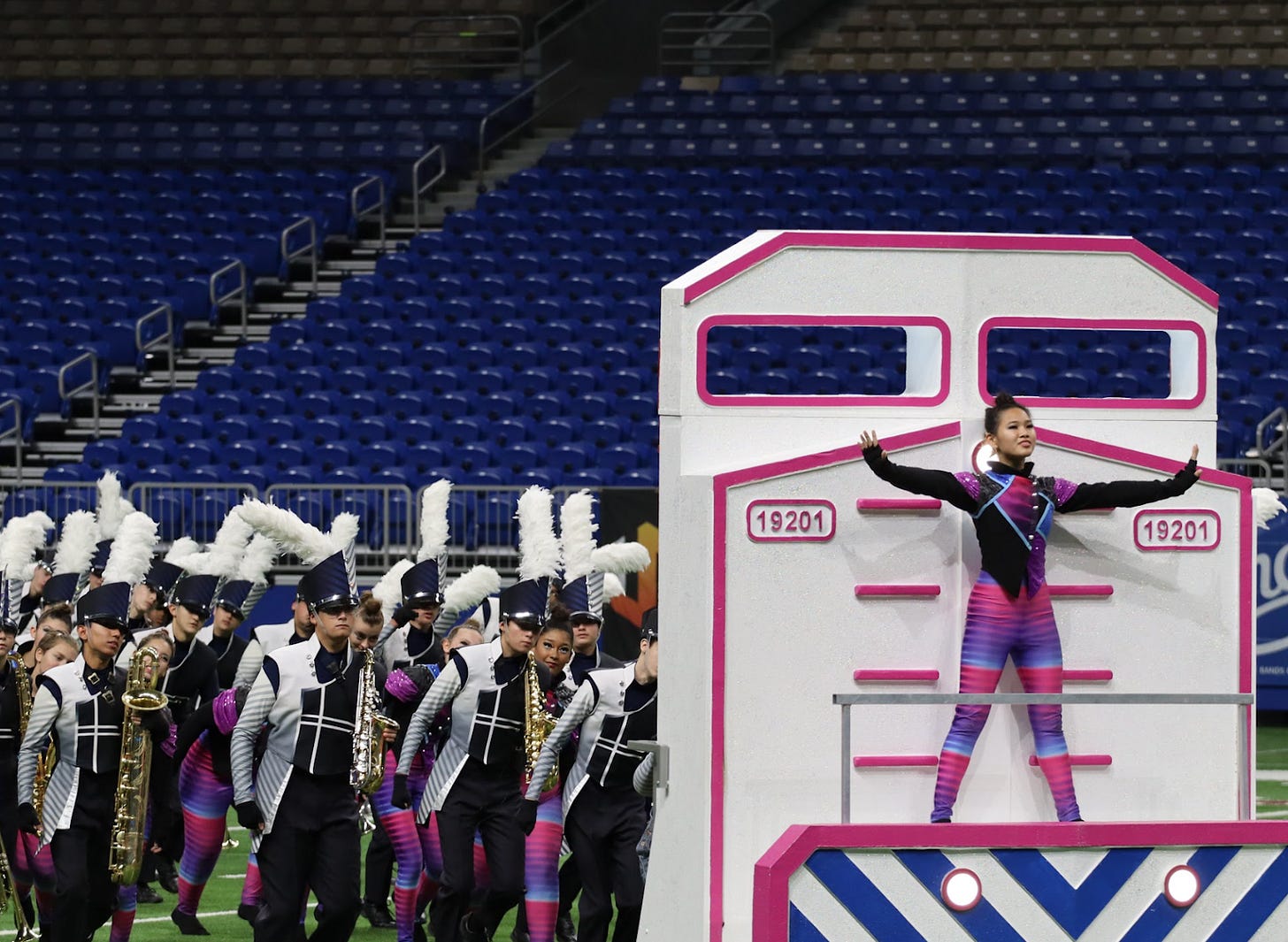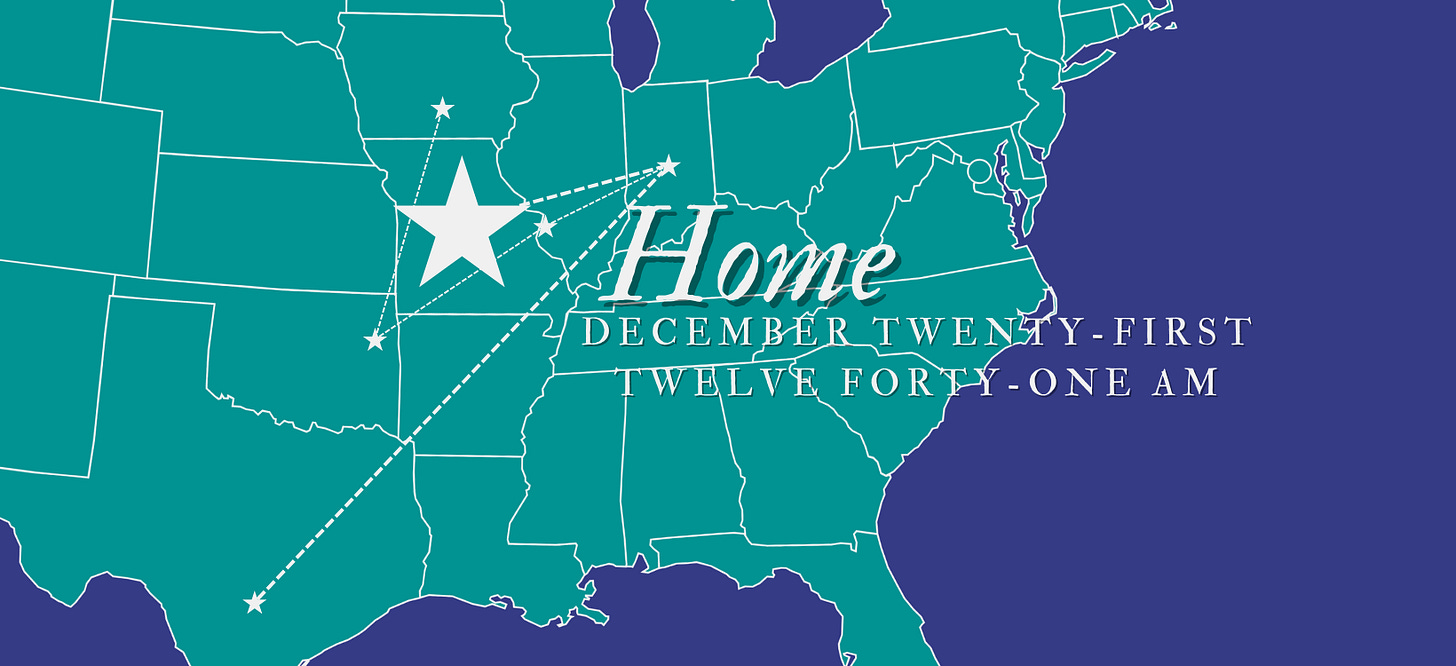FROM THE BOX: There and Back Again
Here's a little something to stick under the tree.
Happy holidays, Marching Arts world! What I have prepared for you today is an Advent calendar of sorts; it should serve as nice road-trip filler, provided you aren’t operating a vehicle or especially prone to motion sickness. It can also be read while ignoring political posturing from distantly related uncles, or during a sleepless night in an unfamiliar bed adjacent to the grandkids’ designated room. Or just read it as it lands in your inbox!
This article kicks off a series of season reviews from the writing staff at GEM. The dust of the season has settled, and online forums are now mostly deserted, aside from the occasional schedule stalker posting an update on who’s maybe going where. To keep spirits alight in the dead zone, we’ve each prepared our own twist on a review of the 2022 marching season! Sort of like an Advent calendar, I’ve carefully selected a set of photos from my experiences through the season and placed little anecdotal gifts behind them. Copyright law permits me to share only a limited number of photographs of the actual bands, so I’ve figured out a way to stretch the amount of band-related stuff long enough to cover all this season had to offer:
If the giant yellow bird (I think it’s a bird?) [Editor's note, Herky the Hawk, the mascot for the University of Iowa, is, in fact, a bird] didn’t clue you in that my season started in Iowa…well, my season started in Iowa, at the third-ever BOA Iowa Regional. I have a lot of opinions about this regional. It’s been through a name and venue change: the first two years, it was the BOA Cedar Falls Regional and took place in the UNI Dome in Cedar Falls. This past year it was the BOA Iowa Regional and was held at the Waukee Northwest High School Stadium in Waukee, where it will be held again this coming season as the BOA Des Moines Regional. This regional is perfectly positioned for several BOA semifinals-level powerhouses; they just don’t really turn up. For the past two seasons, this contest has invited all competing bands to finals due to attendance. This season had 15 bands in attendance, with 14 advancing to finals and Blaine (MN) departing home early. Something is keeping it alive. I don’t know what, but I’m glad it’s still around!
THIS REGIONAL IS PERFECTLY POSITIONED FOR SEVERAL BOA SEMIFINALS-LEVEL POWERHOUSES; THEY JUST DON’T REALLY TURN UP
I’ve been to this regional every year it’s been held, but I was inside a dome the last two years and therefore was entirely unprepared for the sheer amount of wind that one state can produce. The show was good, aside from my constant anxiety anytime a guard would perform a toss. Don’t even get me started on Lincoln-Way Community (IL)’s tarps…the day was one of cheers, fears, and tears, as I sobbed while watching Rock Island (IL)’s show “Beautiful Tragedy” about the fateful tale of Medusa, only to be bending the bleachers later that night rooting for Lincoln (SD)’s “Unchained.” They made Houdini disappear! By evening, temperatures had dropped to a frigid 30ish degrees, which I was able to combat with a bowl of steamed broccoli from the Culver’s across the street and a pair of fleece-lined Pepwear pants that my mother told me I wouldn’t need (take that, mom).
The next stop was this year’s Broken Arrow Invitational, hosted by the titular defending Bands of America Grand Champion Broken Arrow (OK). Once a prestigious and well-attended invitational, the contest has had some difficulties building momentum post-pandemic; this year’s attendees numbered in the single digits, though the quality suffered very little, with stunning performances out of high-achieving bands such as Jenks (OK), Southmoore (OK), and Camdenton (MO).
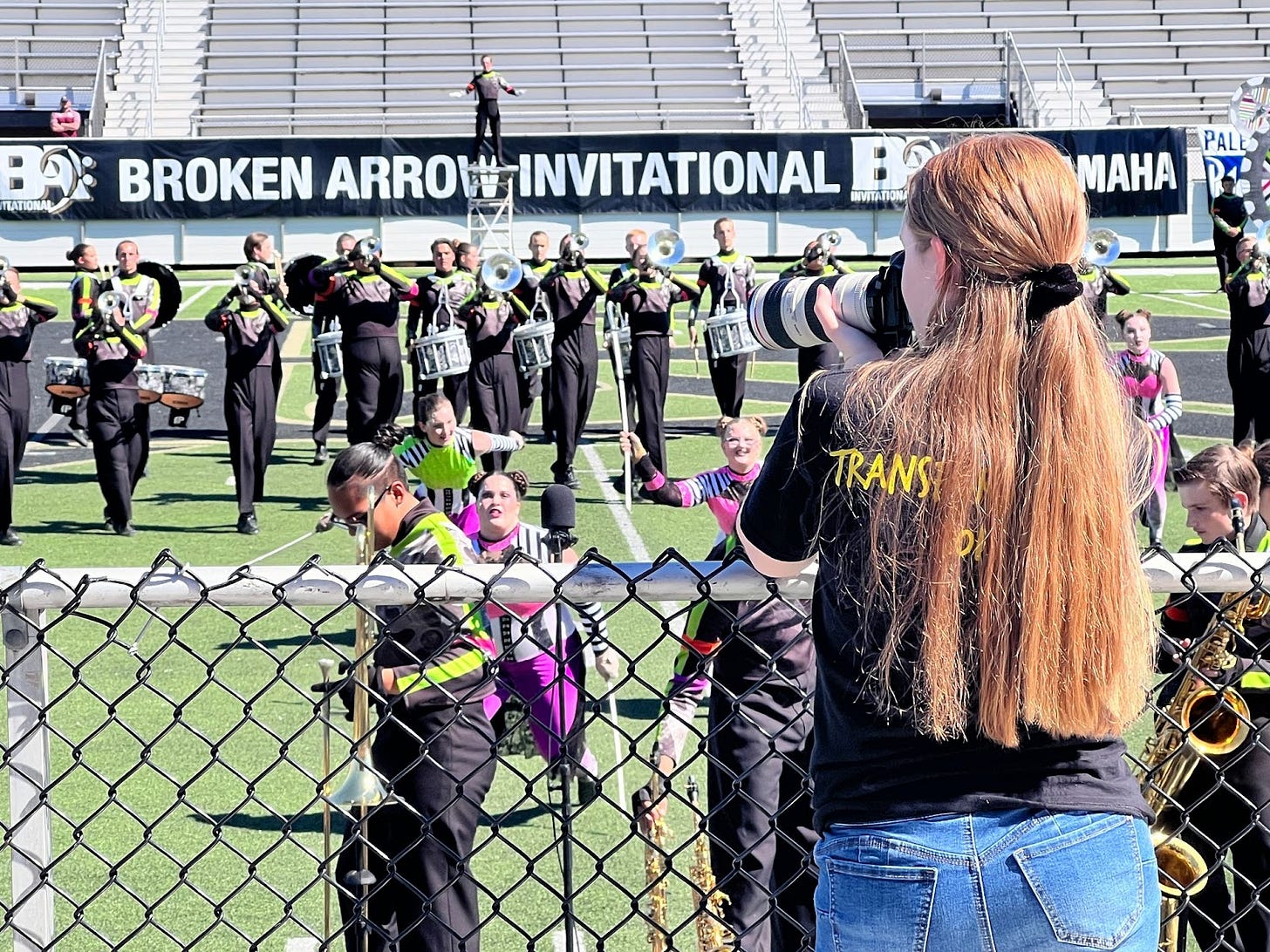
By far, my favorite performance of the day came from Berryhill (OK), performing their show entitled “Berryhill Motor Speedway”. With a Nascar-themed production featuring musical selections like “Fast Car” by Tracy Chapman and “Shut Up and Drive” by Rihanna, it was hard not to adore the show. This class 1A answer to Jenks (OK)’s 2018 production “CARMAN” was a crowd favorite. Equally as memorable was Muskogee (OK)’s show “Under the Red Hood”, which provided an inside look at the classic Little Red Riding Hood tale (I cried at every band competition I attended this year, by the way). It’s pretty hard to go wrong with Radiohead’s “Creep.”
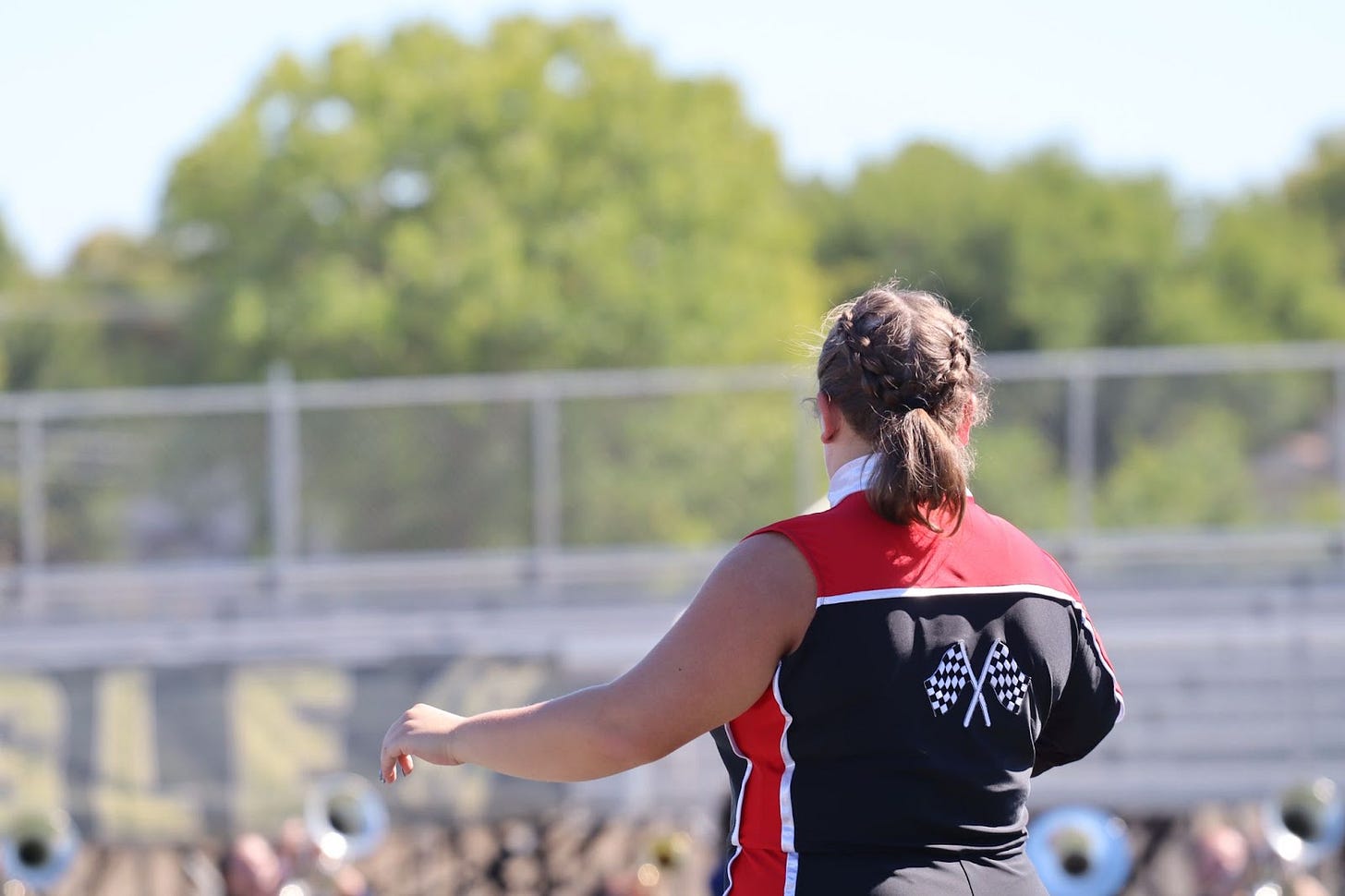
My first time performing in a dome was at the St. Louis Super Regional with my band a million years ago. Since then, I’ve been back most years, if only due to the convenience of it being the only BOA event in my dear home state. Contrary to what detractors on social media say, the St. Louis Super isn’t bad. It’s actually pretty good, even without the top half of finals being filled almost exclusively by Texas bands that can’t stay in their lane (I will be attaching a quick disclaimer of well-intended snark to that last comment). Don’t be fooled by the apocalyptic images of the abandoned parking lot: St. Louis remains one of the top three best BOA Super Regionals.
CONTRARY TO WHAT DETRACTORS ON SOCIAL MEDIA SAY, THE ST. LOUIS SUPER ISN’T BAD. IT’S ACTUALLY PRETTY GOOD, EVEN WITHOUT THE TOP HALF OF FINALS BEING FILLED ALMOST EXCLUSIVELY BY TEXAS BANDS THAT CAN’T STAY IN THEIR LANE.
Kidding aside, this season was an excellent showing for the centermost Super: Staples like Broken Arrow and Blue Springs (MO) demonstrated precisely why they’re considered staples, while breakout performances from Yukon (OK) and Hernando (MS) made for an unpredictable race to finals. St. Louis native Lindbergh (MO) made a long-awaited return to finals with their show “The Purple Thread,” executing a fanfare-filled production complete with pieces by The Beatles and Jimi Hendrix. Just out of finals was the highly anticipated Lakota West (OH), who fought for and earned redemption later in November (more on that later). Bentonville (AR) placed a historic third in finals with their show “Lady”, which I’m still distraught over not seeing at Grand Nationals this year.
My next nationwide band contest tour took me to the Indianapolis Super Regional, one of two stops at my dearly beloved, sweet, beautiful Lucas Oil Stadium. I love you, Lucas Oil Stadium.
Like every other Indianapolis Super in the history of Indianapolis Supers, Avon (IN) and Carmel (IN) totally and completely dominated, which was fine because I like them. Close behind were the perpetual bridesmaids Blue Springs (MO) and William Mason (OH), who were the unquestioned fan favorites and two of my personal favorite shows this season. Ask me four different times who my favorite band of these four were, and I’ll give you four different answers. Blue Springs’ “The Call of the Grove” shares a seat with Bentonville for the title of The Show I’m The Most Mad Wasn’t At Grand Nationals. I cried, as always. It was just too good. The Blue Springs apocalypse is looming, guys. I can feel it.
ASK ME FOUR DIFFERENT TIMES WHO MY FAVORITE BAND OF THESE FOUR WERE, AND I’LL GIVE YOU FOUR DIFFERENT ANSWERS.
Squeaking into a second performance was Union (OK), redeeming their early-season low finishes at local competitions with a 13th-place finals appearance. Union still rises! Avon claimed the first win of three major face-offs between the twin crowns of Indiana with an enrapturing performance of “Bloodlines”, a thrillingly intimate production in which the entire ensemble controls pieces of red cloth in lieu of any props, leaving only the band to command the stage.
Long ago, my band competed at the BOA San Antonio Super Regional. Longer than that ago, I went to elementary school in Texas. I still pretend to be a Texan sometimes, usually whenever I need to explain why I hate cold so much or why I’m really enthusiastic about marching band. This year, I returned to the Lone Star State to watch some band, bringing my noise-canceling headphones with me. I was still half-deaf on the plane home, but it was absolutely worth it!
If you’ve never seen Texas bands, you’re probably okay. If you haven’t heard Texas bands? You have unfortunately deprived yourself of one of life’s greatest mortal pleasures. There is no sound on Earth like Texas brass. They look pretty dang good, too; it’s a commonly touted argument that Texas bands play but don’t move. One look at Forney (TX) quickly disproves this theory, and a few more looks at the likes of Pearland (TX) and The Woodlands (TX) should lend enough credence to the idea that the movement scene of the South has picked up plenty in recent years, and isn’t slowing down anytime soon.
IF YOU HAVEN’T HEARD TEXAS BANDS? YOU HAVE UNFORTUNATELY DEPRIVED YOURSELF OF ONE OF LIFE’S GREATEST MORTAL PLEASURES.
As expected, I was more than blown away by the storied staples of Hebron (TX) and Vandegrift (TX). Particularly poignant was Vista Ridge (TX): The Ranger Band has had more than their fair share of ups and downs over the past half-decade, from winning 6A State in 2018 after a director change to barely squeaking into Grand National Finals in 2021 (which by all metrics is a crazy good achievement, especially in a historically packed year, but less than was expected from the recent UIL frontrunner). Battling directorial and design staff changes, the band surged back to dominance this season with a fifth-place finish at San Antonio. Tears were shed by the VRHS graduate sitting next to me. Cymbals were licked, and solos were shredded. It was, like, totally epic.
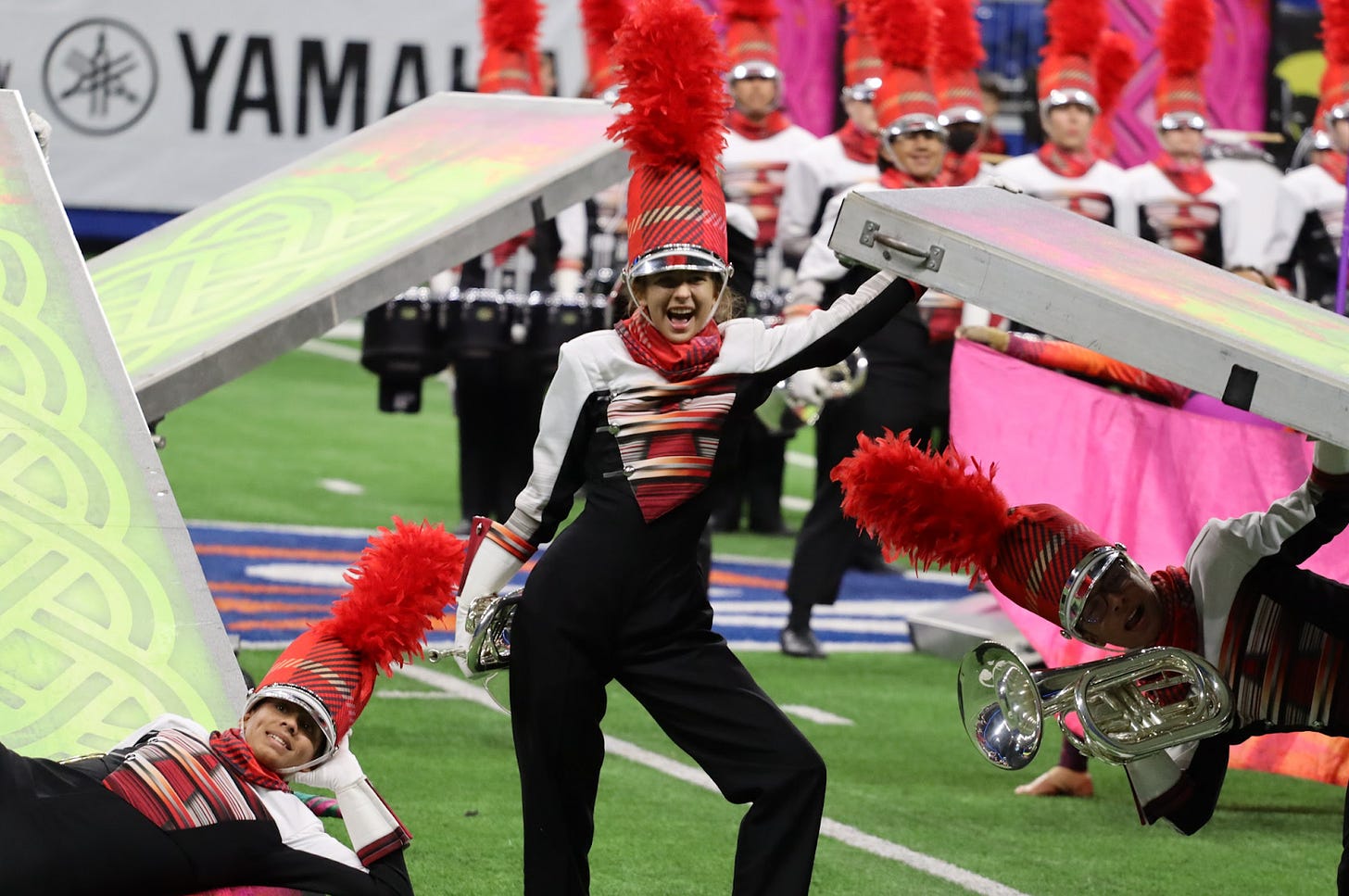
Reliving the season a month and a half later, I still feel the impending boss-battle music as I approach discussing Grand Nationals. It’s Grand Nationals. It’s a big deal. Like, the biggest of deals for anyone north of the Red River.
This was a very interesting and very predictable Grand Nationals. By predictable, I mean that the amount of angry Instagram comments implying some level of rigged-ness generally trended up from the previous year. By interesting, I mean that I, and many people, found several decisions made by the judging panel to be a little bit strange. I’m thrilled I’m not a judge, because I would completely crack under the pressure of making those choices (which is why I make any controversial or snarky statements behind a computer screen instead). Namely, I’m not sure why we didn’t have a band from Utah in finals, which seems to be a remarkably common sentiment.
THIS WAS A VERY INTERESTING AND VERY PREDICTABLE GRAND NATIONALS. BY PREDICTABLE, I MEAN THAT THE AMOUNT OF ANGRY INSTAGRAM COMMENTS IMPLYING SOME LEVEL OF RIGGED-NESS GENERALLY TRENDED UP FROM THE PREVIOUS YEAR. BY INTERESTING, I MEAN THAT I, AND MANY PEOPLE, FOUND SEVERAL DECISIONS MADE BY THE JUDGING PANEL TO BE A LITTLE BIT STRANGE.
On the other hand, I really liked some decisions: getting to see Grain Valley (MO) one more time after seeing them about a hundred times already this season was the icing on the cake. I would watch that show over and over again every season and still be wildly entertained. Lakota West and sister school Lakota East (OH) both made it into semifinals, which was incredibly satisfying after West’s 15th place at the St. Louis Super. James F. Byrnes (SC) stole my heart with their production “Scarlett Confidential”, clearly stealing the judging panels’ as well, evidenced by their jump from Next 8 in prelims to 14th place in semifinals. Morton (IL) defied all predictions to medal in Class 2A over favored Kiski Area (PA) and Jenison (MI), which was shocking to most, but NOT TO ME because I’ve been a Morton fan for years (okay, yeah, it was a little unexpected - but entirely deserved). The greatest outcome of all: the HENNY TRAIN arrived at the station. Hendrickson (TX) scooped up a finals placement after being the Texas underdog of the event, predicted to trail behind Southlake Carroll (TX), Prosper (TX), and Moe and Gene Johnson (TX). Instead, Hendrickson was only bested by Carroll, scoring 9th and 7th in finals, respectively, with Prosper not far behind in 11th and Johnson just barely out of finals in 15th.
It is nothing short of a privilege to have witnessed these incredible bands across six different and diverse competitions this season. It certainly makes the world seem very small - there’s something about being able to hear any one of over 200 high schools mentioned in casual conversation and being able to respond with, “oh, I know where that is”. It’s pretty cool that I received hundreds of DMs and comments on both the GEM page and my personal page this season, expressing gratitude for coverage of a grandkid’s band, tagging friends, and excitedly gushing over being noticed for once. It’s pretty cool that at each competition, I was able to visit with people who shared something in common with me that, in reality, is a pretty niche interest. Now I’m sitting at home for the holidays in my parents’ basement, aware of the incredible loneliness that comes with the season-ending, and very much grateful for the ability to talk to people across the country via the beautifully dangerous gift of the Internet.
We talk about band at least once a day because we’re crazy people, and we keep on writing about it even after the season is over because there are plenty of other crazy people out there willing to read about it. With the release of the BOA 2023 schedule, we’re already booking hotels and planning out content for the coming season. I look forward to sharing many, many more photos and personal anecdotes. But, much like this article, all good things must come to an end, at least for a little while.
Hattie Bartlett is an experienced marching arts content creator making her writing debut with GEM. As a former member of the color guard, she has traveled across the country covering events with WGI and Box5, as well as informally commentating via HornRank. Hattie is currently on staff at the University of Missouri as a field photographer and communications intern. She can be found on Twitter, Instagram, and Tiktok as @ilikeguard.
Graphics by Matthew Carstensen



